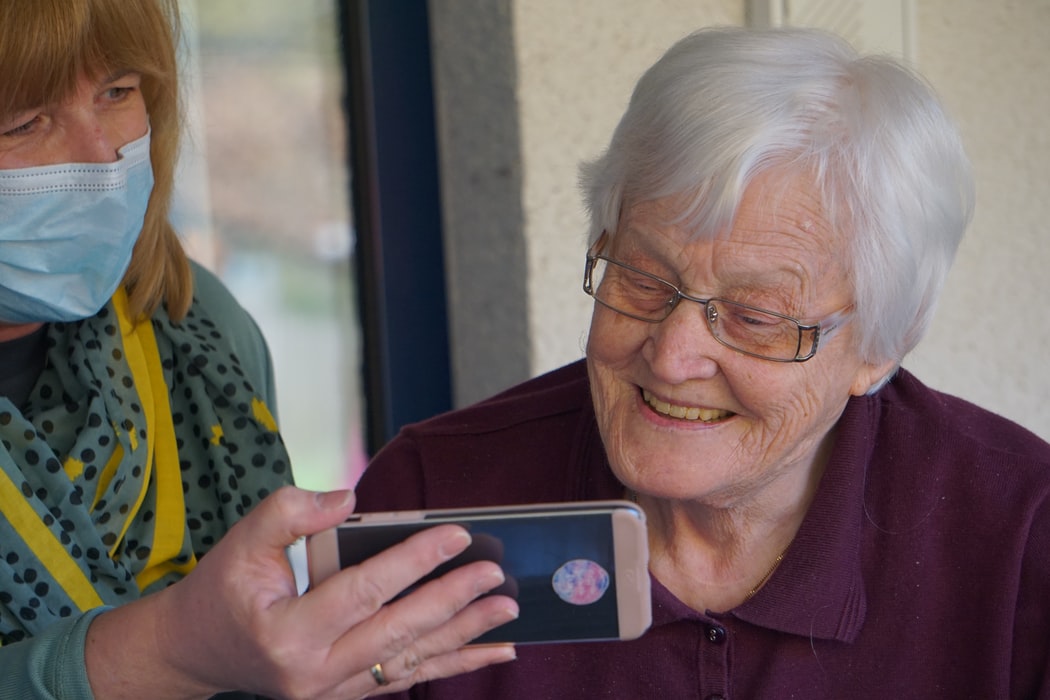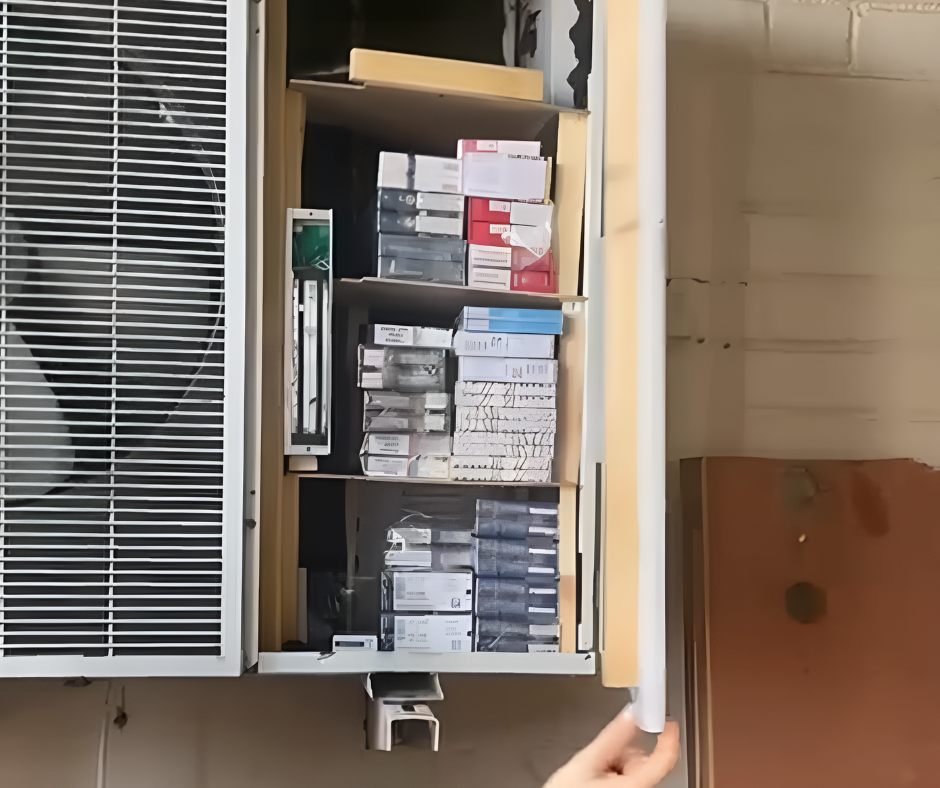The Department for Health and Social Care has updated the guidance surround the visiting of care homes in England.
The government is asking all care homes to allow every resident to name one person who can come for a regular indoor visit. As far as possible this should remain the same person.
The named visitor will need to follow some important steps to reduce the risk of infection to the person they are visiting and to others in the home.
1. Take a rapid lateral flow test
The named visitor will need to take a rapid (lateral flow) test every time they visit. If the result is negative, the visit can go ahead.
The visitor will do the test when they arrive at the care home.
The care home will provide the test.
2. Wear PPE
Visitors will need to wear personal protective equipment (PPE) for the duration of these visits:
- disposable gloves
- a disposable plastic apron
- a fluid-repellent (type IIR) surgical mask
The care home will provide these.
Visitors should follow all other infection prevention and control measures, such as maintaining social distancing when walking through the home.
If there is an outbreak in a care home the home will have to stop most visiting in order to keep everyone safe.
How to arrange to be a single named visitor
The care home will ask each resident who they would like their single named visitor to be.
You might like to talk with other family members and friends who might like to visit, and with your loved one who lives in the care home, about who would be the best person.
If the resident lacks the capacity to decide who they want their named visitor to be, the care home will speak with their family and friends so they can decide what to do between them.
What a single named visit allows
You will be able to come in for a regular indoor visit, sitting in the same room as your loved one, with no screen or anything between you.
We strongly advise against physical contact in order to keep everyone safe. You may wish to hold hands – but please remember that any contact increases the chance you could pass on the virus.
Close contact like hugging should not happen.
We are not setting rules about how often you can visit, or how long you can stay for. This will vary from place to place, depending on what the care home decides they can do safely and comfortably.
There will probably be some limits. We are asking visitors to be supportive of the care home and recognise that the home will need to ‘share out’ visiting appointments so everyone gets the chance to have one.
Even though you and your loved one may have had the vaccine it is still very important to follow all of this advice and be careful with PPE and social distancing to reduce the risk of infection.
Essential care giver
Some residents may have a care or support need that cannot easily be provided by care home staff, or not without causing distress.
This might be help with washing and dressing where the resident becomes distressed unless it is done by a loved one.
Other examples could be where the resident is refusing to eat unless they do so with a loved one present. Or where a family member or friend can calm down challenging behaviour more easily than care home staff.
The government is advising that care homes should offer the ‘essential care giver’ scheme for these types of situations. It will not be necessary for everyone.
These visitors will be able to visit more often in order to provide this essential care. They will have the same testing and PPE arrangements as care home staff.
How to arrange to be an essential care giver
If you think your loved one would benefit from this type of visit, you should speak to the care home.
You may well already be providing this type of support, or you may have done so before the pandemic or most recent lockdown.
Each resident’s situation and needs will be unique. So the exact arrangements will need to be agreed between the care home, the residents and their family and friends.
If it is helpful, a social worker can be asked to help in these conversations.
What an essential care visit allows
You will be able to visit the care home regularly to provide care and support that involves closer contact.
You will need to agree with the care home what exactly you will and won’t do. This will depend on the needs your loved one might have.
You will need to agree how often you come in, and when. The care home will also agree with you what support or practical help you might need in order to provide the care.
You will probably be having closer physical contact with the resident and you may spend longer in and around the care home. Because of this it is important that you follow all the steps you are asked to take to reduce the risk of infection.
General visiting guidance
The care home manager and staff have the job of keeping everyone safe and helping everyone have a good experience of visiting. They need your support. Please help them out.
When you visit you are not just coming into your loved one’s home, you are also in the home of many other residents. So please follow any advice and instructions that the care home staff give you to keep everyone safe.
In return we are also asking care homes to follow our guidance carefully and provide opportunities for visiting wherever it is safe to do so.
We are asking care homes to make sure they explain their visiting policies, and the reasons behind them, to residents and visitors.
When you are in and around the home, please be careful to observe social distancing from residents, staff and other visitors.
You can still visit if you have not been vaccinated, or if the person you are going to visit has not been vaccinated. But we strongly recommend you have the vaccine when it is offered to you to help make visiting safer.
Please make sure you wear whatever PPE you are asked to correctly and keep it on.
Start dates for visits
We are asking care homes to put these new arrangements in place from Monday 8 March.
Please bear in mind that it may take care homes a short while to make the changes they need to get everything ready.
Care homes will only be able to welcome a certain number of visitors every day. This is simply because visitors need to socially distance and so staff can help them take their tests.
You will need to make an appointment to visit. And it may be a short while until the care home can offer an appointment to everyone who would like one.
But we are asking care homes to make sure they keep families and friends informed about visiting arrangements, so they know what to expect.
Changing visitors
Each visitor should remain unchanged as far as possible. This is simply to reduce the number of different people coming into the care home.
We recognise that there might be situations, such as illness, where a change is necessary.
If this is the case, you should speak to the care home manager and agree the best approach.
Special circumstances and flexibility
We have developed our guidance carefully with clinical experts and by talking with care homes and charities who represent families and care home residents.
The guidance is there to help care homes get the balance right between keeping everyone as safe as possible, while providing as much safe visiting as they can.
However, we realise that every home and every resident is different. There will be some situations where a slightly different approach is needed because of the needs of the resident.
So, for example, the care home and the family might agree that both parents can come to visit their son or daughter in a care home.
Any changes to the rules need be agreed by everyone involved. The care home, the resident and the family all need to be comfortable with what is agreed.
There are some parts of the guidance that must be followed – like being very careful with PPE and social distancing to reduce the risk of infection.
Including more family members and friends
There will be opportunities for more members of the family and friends to come for a visit – not just the one person who is the single named visitor.
But these visits will need to happen in a different way, in order to reduce the number of different people coming into the care home and to reduce the risk of passing on the virus.
Visits can take place outdoors, including at a window. They can take place in special ‘visiting pods’ if the care home has one, or in a room with a screen between you and the resident.
For example, if the resident has an essential care giver, they could sit with the resident while another visitor was on the other side of the screen or window. For some residents this could be good way of helping them recognise and chat with their visitors.
These types of visits still need to be agreed with the care home, and you will probably need to book an appointment.
With all types of visiting, it is still important to observe good social distancing, and follow any advice or instructions the care home gives you.
If the care home makes a decision you disagree with
If the care home makes a decision you disagree with, it would be best to speak to the care home manager and ask to discuss the situation.
You could ask about the risk assessment the care home has developed to decide its visitor policy.
You could consider asking the care home to do an individual risk assessment for your loved one.
If this does not help, you could consider contacting a social worker at your local authority. They may be able to discuss the situation with you and the care home manager to find a solution.
Sometimes there will be good reasons (like an outbreak) why the home cannot offer the visiting you would like. But our guidance clearly says that the care home should not put blanket restrictions in place.
Care homes not offering visits
The government’s guidance says that visiting should be allowed to happen wherever it can be done safely.
Care home managers and staff will know best how things should run in their care home. For example, there might have to be limits on how many visitors can come in, or how often, because of the amount of space or layout of the rooms.
Sometimes there will be good reasons (like an outbreak) why the home cannot offer the visiting you would like.
But our guidance clearly says that the care home should not put blanket bans in place.
We expect all care homes to do what they can to follow our guidance. And they should explain to everyone what they are doing and why.
If you think the care home is not doing this please raise the matter with the home. If you are not satisfied that the issue is resolved, you can contact the Care Quality Commission (CQC).
The CQC is responsible for inspecting the safety and quality of care provided in care homes, and they will consider if they need to investigate.
Contact CQC National Customer Services Centre by:
- emailing enquiries@cqc.org.uk
- calling 03000 61 61 61
- using this online form to give feedback on your care
What else you can do to help manage the risks
There are lots of ways you could help to reduce the risk of passing on the virus without knowing during a visit:
- wash your hands frequently and avoid touching your face or mouth
- think about the best way to get to the care home. It’s a good idea to avoid public transport if you can. Asking someone from your household (or support bubble) to take you would be a good idea if you cannot drive yourself
- reduce your contact with other people, by not socialising, in order to minimise the risk that you unknowingly pick up the virus
We also strongly advise that visitors have the vaccine when they are offered it.
Most importantly, remember to observe social distancing at all times, use whatever PPE the care home asks you to, and keep it on.
Future developments
This is the first step to opening up care homes for more visits. When the data shows it is safe, we want to go further and allow more visiting, and more visitors.
At step 2 of the roadmap out of lockdown in mid April, we will look carefully at the effectiveness of the vaccine for people living in care homes, as well as levels of infection in the local community, especially of any new variants.
We will take a decision at that point on extending the number of visitors and frequency of visits and set out a plan for the next phase of visits for people in residential care.
Advice for staff
Care home staff play a very important role in helping visits happen safely and making sure everyone gets the most out of it.
Please help visitors to understand and follow all the advice and instructions they are given. This might include reminding them about social distancing or PPE use if they forget or are not quite doing it right.
This might be very helpful the first few times someone comes in to visit, or if the visiting arrangements have changed since they last came in.
Your manager should explain to you everything you need to know about the visiting arrangements in the home, and any special arrangements for individual residents.
It is important that you are comfortable with what you are being asked to do to support visiting.
If you see anything that makes you feel uncomfortable or you think is not being done the right way, you may want to bring it up with your manager or other colleagues.
Contains public sector information licensed under the Open Government Licence v3.0. // Open Government Licence (nationalarchives.gov.uk)




